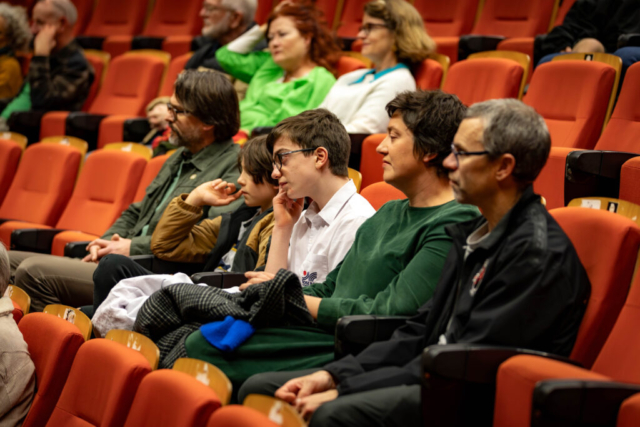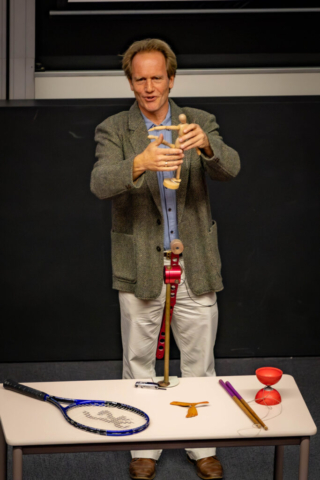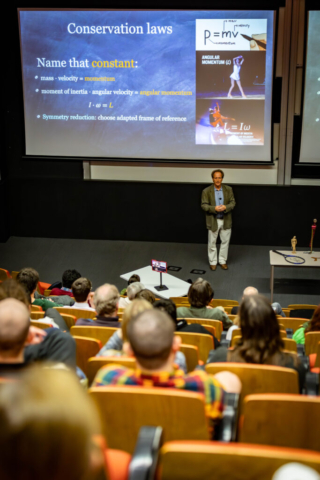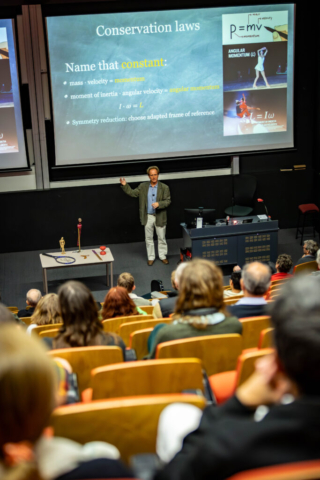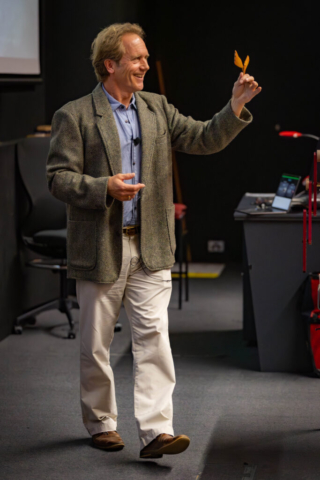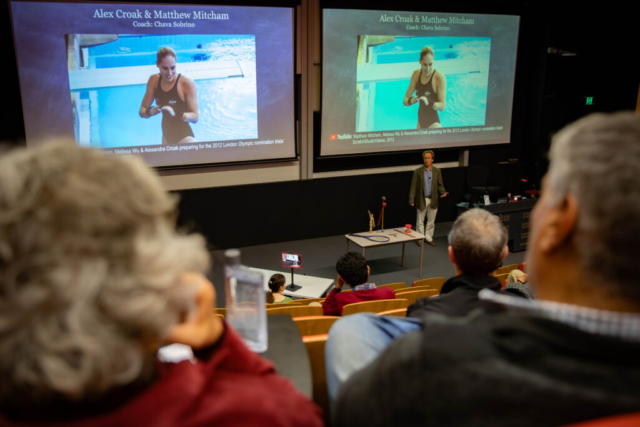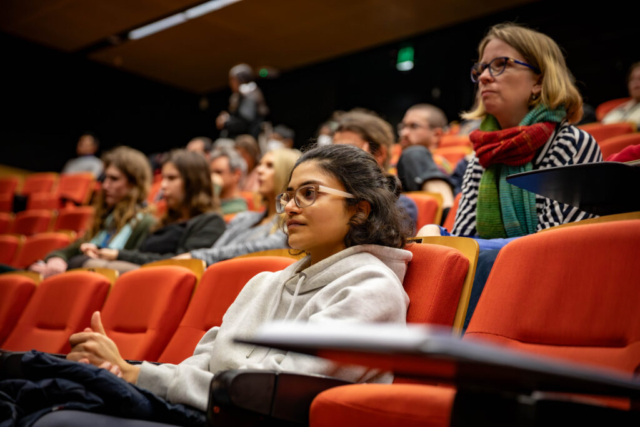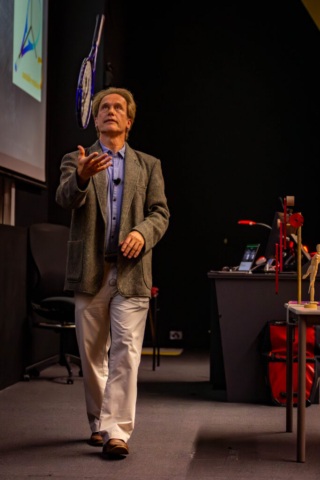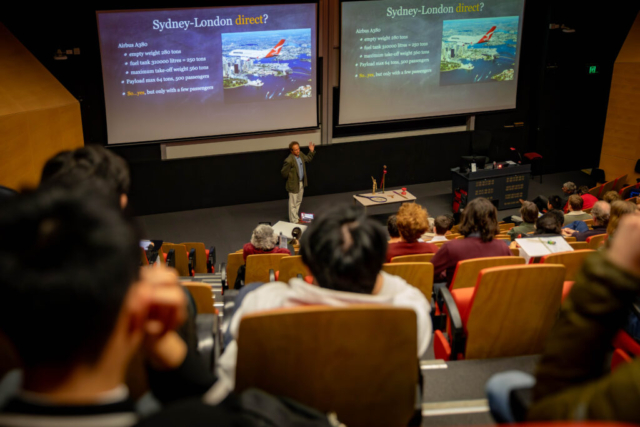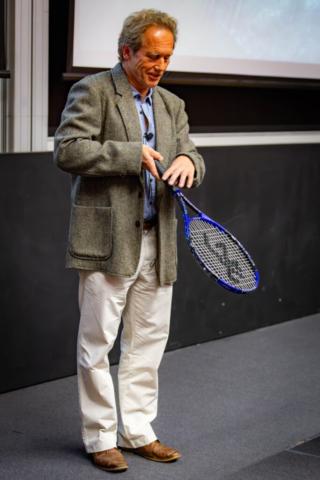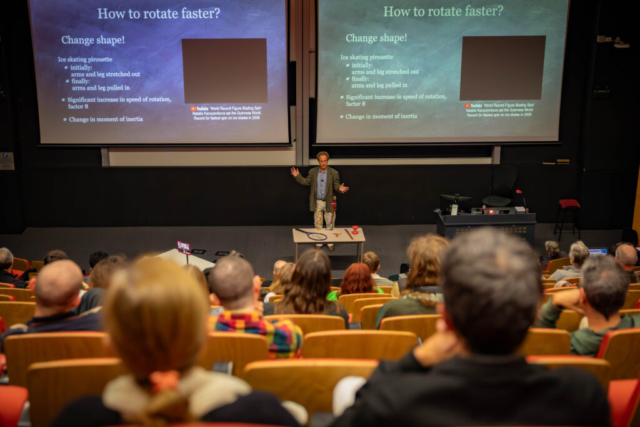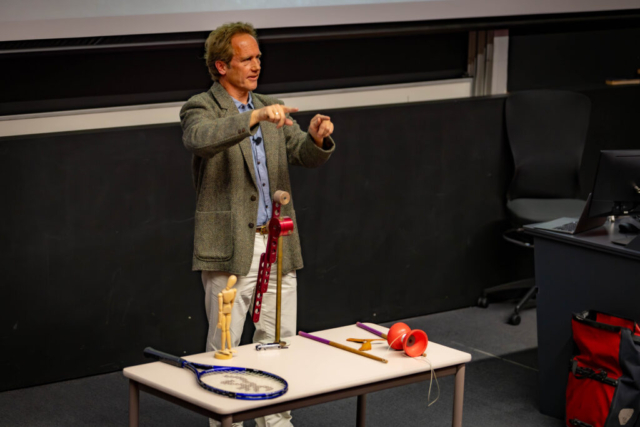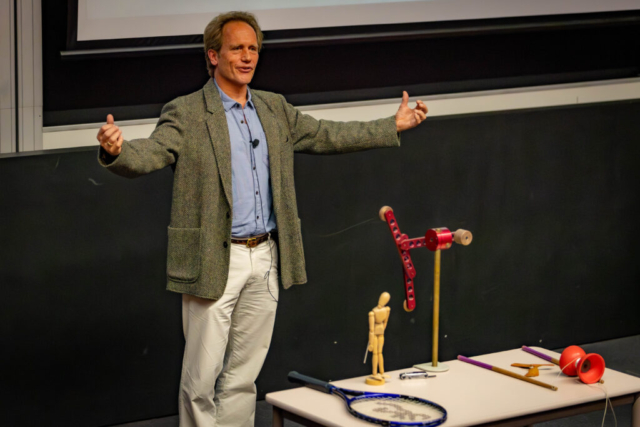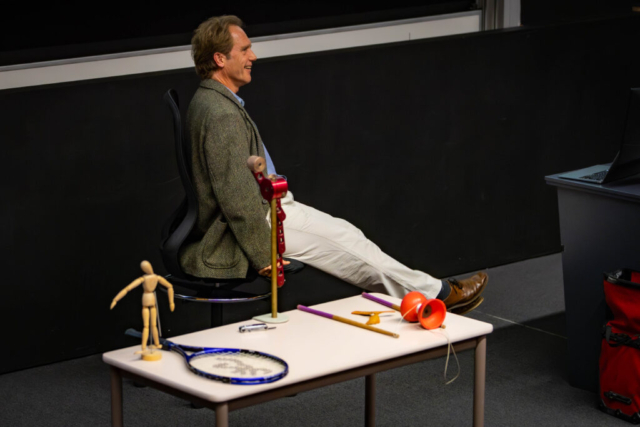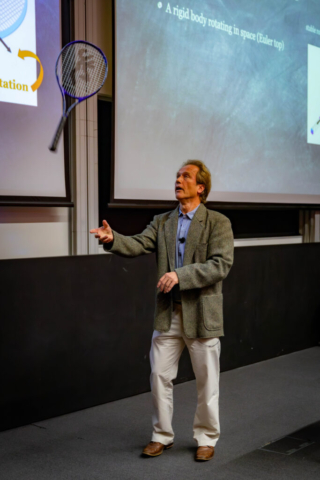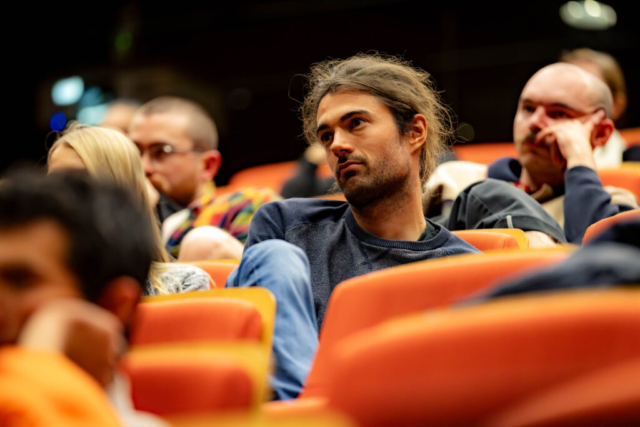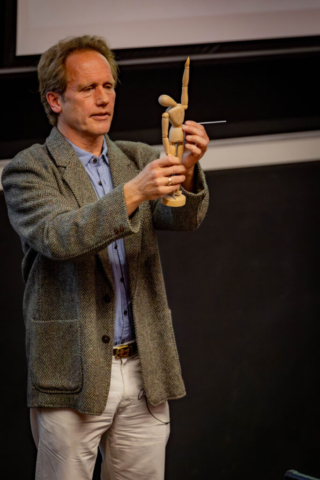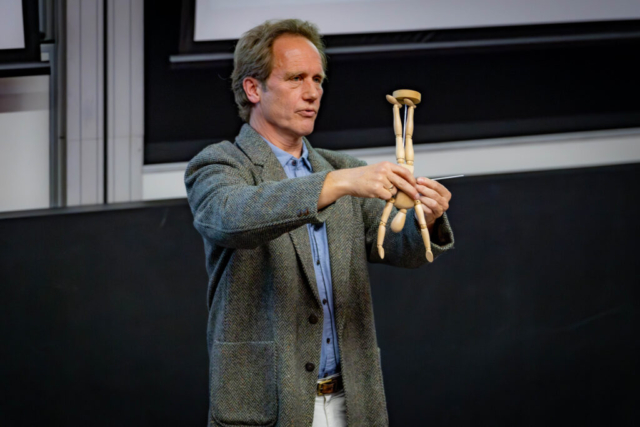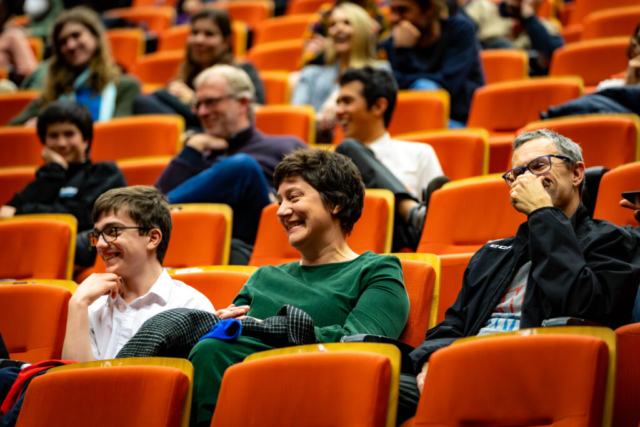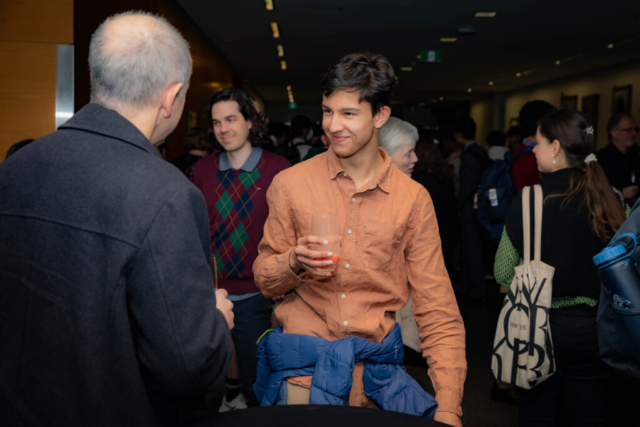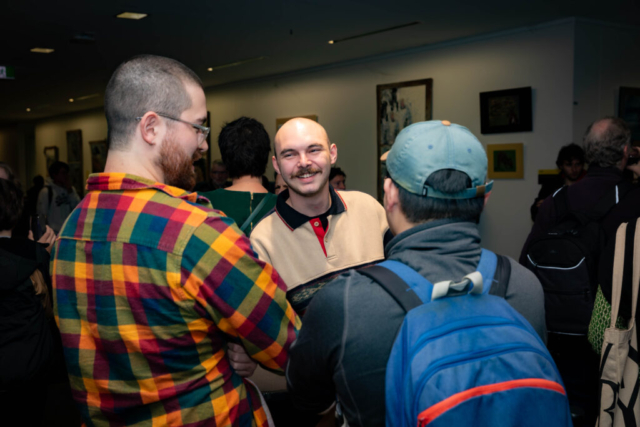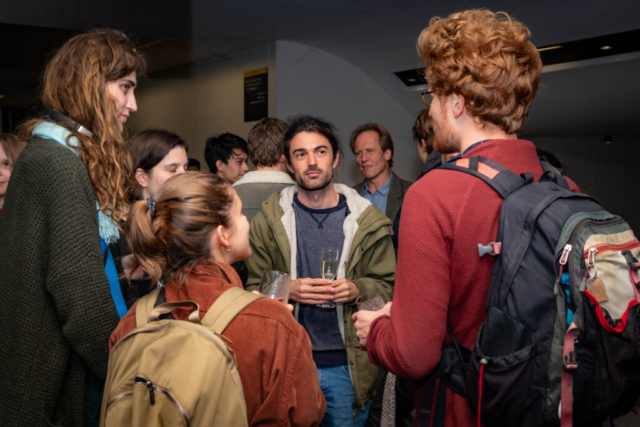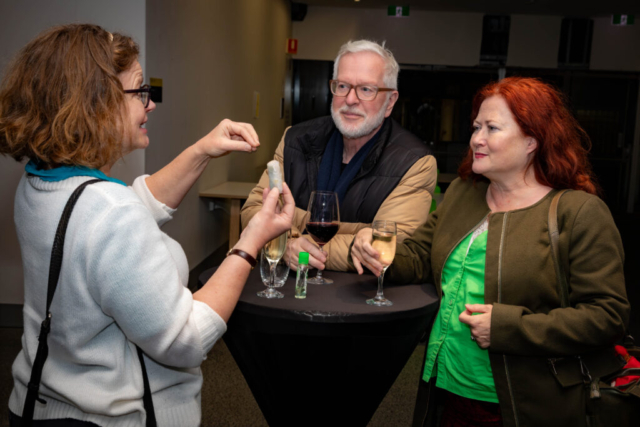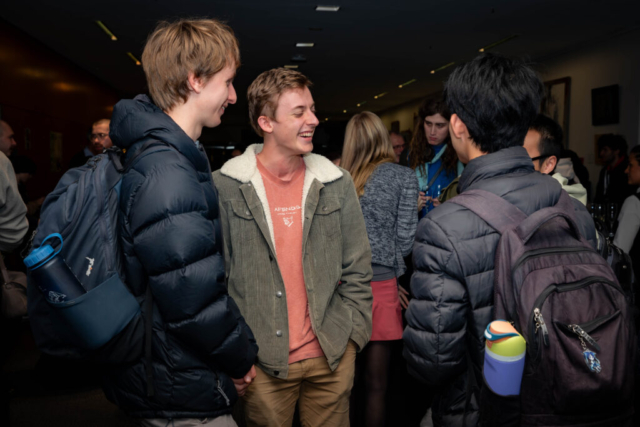“The mathematics of twisting somersaults” lecture recording & photo gallery
On the evening of Tuesday 15 August, SMRI hosted a public lecture for National Science Week, presented by University of Sydney mathematician Holger Dullin. View the lecture recording and photo gallery:
Lecture description
What do a space station, a falling cat, and a springboard diver have in common?
They are in free fall. But in contrast to a falling rock, they all have the ability to reorient themselves whilst they are falling.
In this talk, we’ll explore the principles behind this phenomenon. The mathematics underpinning the reorientation uses beautiful symmetries to explain the conservation laws of dynamical systems. In mathematics, this refers to systems where a function describes a point in space that is dependent on time, e.g. the swinging of a clock pendulum, or water flowing in a pipe.
Our understanding of the theory behind twisting somersaults (backed up by numerical simulations) has led to the discovery of a new dive called 513XD, which is awaiting performance at one of the next Olympics!
About the speaker: Holger Dullin is a Professor of Applied Mathematics at the University of Sydney. His research in dynamical systems employs geometric ideas to better understand a variety of problems ranging from (non-) rigid body dynamics to the gravitational n-body problem, quantum mechanics and spectral theory. He currently holds two ARC grants.
Holger received his PhD in theoretical physics from the University of Bremen in Germany in 1994. He was a researcher in Boulder, Colorado, and a lecturer in Loughborough, UK before coming to Sydney in 2008. When not doing mathematics, he can be found bushwalking with his wife and son.
Photo gallery
All photographs by Jayne Ion.
- Interview with Jessica Fintzen - 2024 March 20
- “Geometry: the archetype of beauty” public lecture and photo gallery - 2024 March 15
- Pi Day 2024: public lecture & Sydney high school workshops - 2024 February 6



